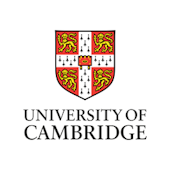Research: Vertebrate Evolution
The focus of this work is concerned with exploring the diversity of vertebrate (backboned) life on Earth during the Mesozoic Era by integrating anatomy, physiology, ecology and geology. This work is integral to palaeobiology, but is of interest to evolutionary biologists, systematists, biostratigraphers and tectonic modellers.
Fresh Discoveries
Painstaking reconstruction of species that are entirely new to science, or of ones that have been perhaps poorly described in the past, greatly improves the understanding of the range and diversity of vertebrate life. Recent work has focused on early ornithischian dinosaurs: Heterodontosaurus (from the Early Jurassic of S. Africa) and Scelidosaurus from the Early Jurassic of England.
Current Research
These include functional investigations on the anatomy, functional morphology and evolution of limb posture in early archosaurian reptiles; palaeoengineering (using finite element modelling); palaeoecology in order to develop the first truly rigorous assessment of abundances and diversities of fossil animals.
New Research Directions
Include the systematics and evolution of basal (early) ornithischian dinosaurs and, related to this work, a complete revision of stegosaurian dinosaurs (the first in nearly a century). In addition, entirely new work is being undertaken on the taxonomy, functional morphology and evolutionary history of pliosaurs (giant marine reptiles of the Mesozoic). Finally a novel approach to the systematics and biogeographic distributions of Late Cretaceous and Early Tertiary vertebrate groups is being undertaken to investigate the link between their evolutionary histories and tectonically-driven continental movements.
Experience
-
–presentReader in Paleobiology, Curator of Palaeontology, Sedgwick Museum of Earth Sciences, University of Cambridge
- Website
- Article Feed
- Joined


